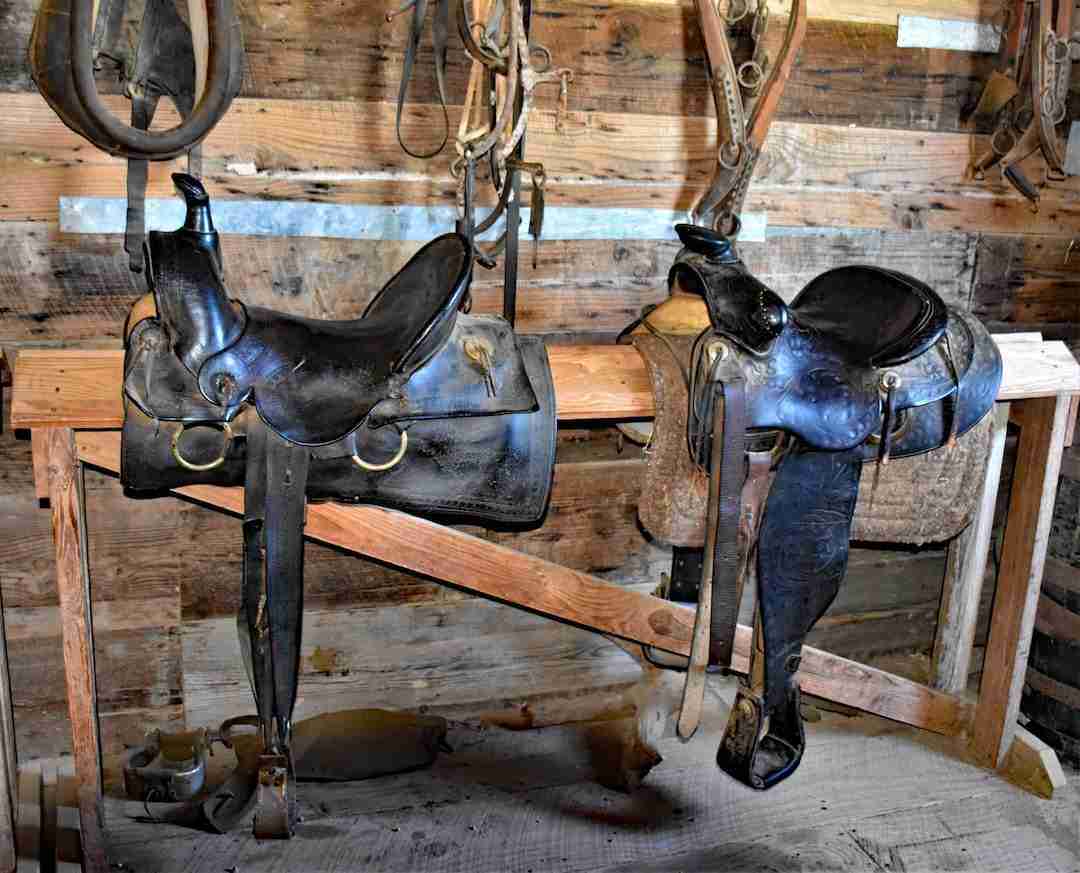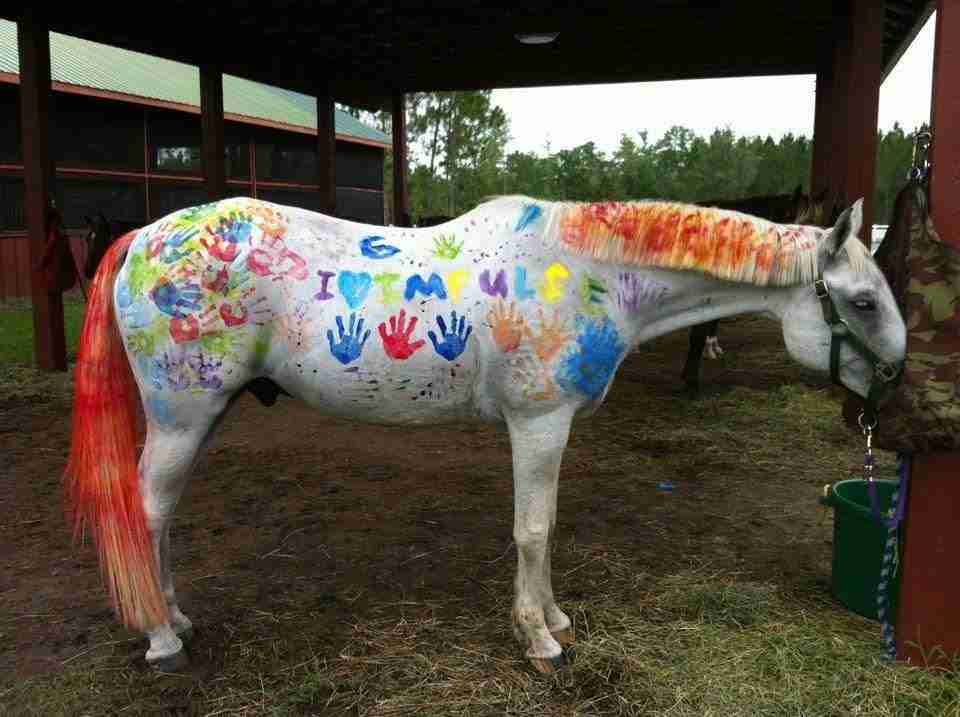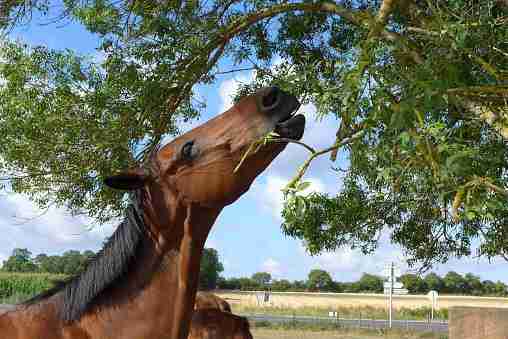Chocolate palomino horse genetics have a striking appearance: deep brown coats, white manes, and whitetails. However, this pattern of coloration is rare and does not breed true. What’s more, there are still some aspects of genetics we don’t understand. What are the genetics of chocolate palomino horses?
Chocolate palomino horses result from chestnut base coat color and the sooty trait producing a liver chestnut diluted by a single copy of the cream gene, making them true palominos. Silver black horses and liver chestnuts with the flaxen gene look similar but are not palomino.
In addition to true chocolate palominos, there are a couple of impostors with a genetic makeup that is not palomino but produces a similar appearance. Without genetic testing, these can be difficult or impossible to tell from genuine chocolate palominos. Let’s take a look at the intriguing world of horse color genetics.
Liver Chestnut Plus One Cream Gene Equals Chocolate Palomino
If a horse is chestnut and has a single copy of the cream gene (a dilution gene), it is genetically palomino. It will have the typical golden palomino appearance and light brown eyes.
Liver chestnut diluted by a single copy of the cream gene results in dithe luted mane and tail hairs but a dark coat color, in other words, chocolate palomino. Like ordinary palomino, it is a color type rather than a breed and does not breed true.
The Genetics Of Sootiness In Horses
You may want to know what makes a liver chestnut genetically distinct from a lighter chestnut. However, you will have to wait while science unravels the mysteries of the sooty trait, which results in darker coat color, especially along the horse’s topline.
A recent statistical analysis of over a thousand offspring of five Freiberger (Franches-Montagnes) stallions in Switzerland suggested that darker shades of chestnut and bay may result from recessive genes. Findings from other studies make geneticists think that multiple genes may be responsible for the sooty trait.

The Genetics Of Chestnut Horses
Whatever the underlying genetics of sootiness, we do understand chestnut color. To explain what causes it, we’ll have to dive into a brief primer on genetics. You must realize that genes come in pairs, one on each pair of chromosomes (at the same place or locus on each chromosome).
These pairs of genes code for the same trait (whether that is coat color or a digestive enzyme, etc.). However, they do not always result in the same expression of the trait. Instead, they come in different forms known as alleles.
If an organism has two copies of the same allele, it is said to be homozygous. We call it heterozygous if it has two different alleles of the same gene.
Alleles affect each other differently, with some being dominant (overriding the other) and others being recessive (overridden). A recessive allele only shows in the organism’s physical appearance if it is homozygous and no dominant allele is present to mask it.
The extension gene (written e for the recessive form and E for the dominant form) affects the MC1R protein, which codes for different forms of melanin. The e allele codes for red melanin and the E allele for black melanin. Therefore, a horse that is ee will show the recessive trait of red hair all over, which we call chestnut.
Horses that are Ee or EE will be black unless the widespread agouti gene (A dominant to a) intervenes. Agouti does not affect red pigment (ee), but it acts on black hair (Ee or EE) to restrict it to the points (mane, tail, and lower legs), meaning that such a horse will be bay.
Because of the relative frequency of the E allele and dominant agouti in the gene pool, bathe y is a commoner base coat color than black, which is why people consider it a base coat color rather than a dilution.

The Effect Of The Cream Dilution Gene On Horses
The cream dilution gene is one of many dilution genes found in horses that “dilutes” the coat color and mane and tail hairs to a lighter hue. This gene has the alleles “cream,” written Cr, or “non-cream,” written N. The Cr allele is incompletely dominant, partially but not wholly overriding the N allele.
If a horse is homozygous dominant for the cream allele (CrCr), its appearance will be cremello, with rosy pink skin and blue eyes. This case is known as a “double dilute” because two copies of the dilution allele are present.
If the horse is homozygous recessive for this allele (NN), it will not display any cream dilution and will probably be chestnut (or bay or black, the other base coat colors).
Suppose a horse is heterozygous for this allele (NCr). In that case, it will show cream dilution, which dilutes the mane and tail hairs to almost white and dilutes reddish-brown (chestnut) coats to golden color and the eyes to light brown, resulting in palomino.
Bay horses with a single cream dilution allele are buckskin in appearance, while black horses with a single cream allele are known as smoky black.
Other Articles You Maybe Interested In
Horse Breeds That Have Unique Manes
Breeds of Horses with Blue Eyes
Do Horses Grow Moustaches?
How Much Space Does A Horse Need?
How Strong Is A Horse
Because only a single dilution allele is present in all these cases, such horses are known as single dilutes. A single dilute chestnut horse is palomino if the dilution gene is the cream dilution – there are many other dilution genes such as the champagne and pearl dilutions.
As a result of only having one cream dilution allele, a palomino bred with another palomino has a 50 percent chance of producing palomino offspring (and a 25 percent chance of producing a chestnut, and a 25 percent chance of producing a cremello).
If sooty traits are present, the mane and tail dilute to very pale gold, but the base coat color remains dark, resulting in a chocolate palomino. Because sootiness tends to spread from a horse’s topline to the lower parts as the animal ages, older chocolate palominos show a more uniformly “chocolate” appearance than younger ones.
Breeds That Can Show Palomino Appearance
Because palominos, including chocolate palominos, are a color type, you can find them in many horse breeds. However, breeds whose gene pool does not include the cream dilution gene, such as Frisians, will not throw out palominos.
Palominos and chocolate palominos are found among Thoroughbreds, Standardbreds, Arabs, Quarter Horses, Tennessee Walking Horses, American Saddlebreds, and American Saddle Horses. Their stunning coloration makes them much in demand for events such as rodeos across North America. Chocolate palominos are rarer than golden palominos, and you will be lucky to find one.

Chocolate Palomino Lookalikes
So now you know what a chocolate palomino is: a liver chestnut horse with a single copy of the cream dilution gene. However, a couple of other genetic makeups (genotypes) result in a physical appearance (phenotype) resembling chocolate palomino. While these superficially resemble true chocolate palomino, they do not have the cream dilution gene and are thus not true palomino.
Liver Chestnut Horses With The Flaxen Trait
Flaxen is a genetic trait that affects the mane and tail of chestnut horses, turning them a pale blonde color (flaxen). Flaxen is a breed trait of the Haflinger – look up this breed, and you’ll see what flaxen is.
Geneticists used to think that flaxen was the result of a recessive allele (notated Ff), but recent studies suggest that multiple genes act to produce this trait. Many horses carry this trait but do not show it. However, it may show in their offspring.
Although a liver chestnut horse with a flaxen mane and tail will look almost exactly like a chocolate palomino, the light mane and tail result from the flaxen trait, not a cream dilution factor, and such a horse is, therefore, not a true palomino.
To determine whether you are dealing with a flaxen liver chestnut, or a true chocolate palomino (with a cream gene), you will have to test the horse’s genetics.

Black Horses With The Silver Dapple Gene
The silver dapple (or silver) gene, written as Z, is a dilution gene that works on black base coat color, diluting black coats to chocolate, sometimes with dapples, and the mane to flaxen or silvery gray.
It can affect black or bay horses, as it works on black color but does not affect red coat color. As a result, chestnuts or chestnuts with dilution factors (palominos and cremellos) will not show this dilution. However, they may carry this gene, and their offspring may show it (in addition to any cream dilution).
Chocolate palominos look similar, but the presence of dapples in this lookalike is a way to distinguish. If no dapples are present, the undertones of the coat may help: palominos will show yellow or gold undertones, while silver horses will show black, brown, or gray undertones.
You can also look at the fine hairs around the eyes and muzzle – these are black in a black-based horse. Finally, chocolate or sooty palominos may show lighter brown eyes. However, sometimes you will need genetic testing to distinguish the two.
The silver gene is found in many American breeds such as the Rocky Mountain Horse, American Saddlebred, Missouri Foxtrotter, Quarter Horse, Morgan, and Tennessee Walking Horse. It is associated with multiple congenital ocular abnormalities.
Conclusion
We hope you were able to follow along as we unraveled the mysteries of horse color genetics. Now you know what makes a chocolate palomino, giving you a greater appreciation of this much sought after color.









